| | Virulent blackleg of canola/rapeseed is a fungal canker or dry rot disease of the actively growing crop that causes stem girdling and lodging (Figure 1). In heavily infested crops, up to 100 per cent of the stems may be infected, resulting in major yield loss.
Two types of blackleg fungus infect canola weakly virulent and virulent. The weakly virulent, or mild type, has always been common in canola fields. The disease appears on leaves and stems in August but does not usually cause significant damage.
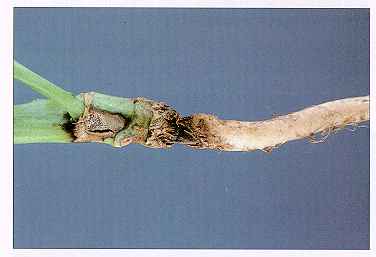
Figure 1. Blackleg cankers can girdle stems - note picnidia.
Virulent or severe blackleg infects canola seedlings and progressively damages the growing crop in June and July. It causes major crop loss by severely damaging or killing infected plants (Figure 2).
When blackleg spores come in contact with growing canola, they infect the living cells of the plant. Both types of blackleg cause dead patches that appear as pepper-like spots on canola leaves, pods and stems. The virulent strain infects canola from germination to maturity, while the weakly virulent strain is only really active on the ripening crop and causes little or no yield loss.
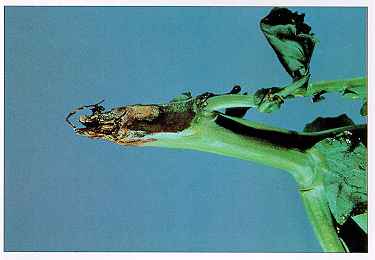
Figure 2. Blackleg-girdled stems often snap off.
The extent of spread
Virulent blackleg remains prevalent in east-central Alberta. Yields were average with blackleg at low levels in most of the fields. In the Peace River region, over 2,000 fields were surveyed in 1994 and 1995. One hundred fields were confirmed in 1994 and over 60 fields confirmed in 1995, primarily in the Falher, Birch Hills and Grande Prairie areas. In 1996, over 1,400 fields were surveyed with only 14 fields confirmed with virulent blackleg.
A decline in virulent blackleg incidence can be partly attributed to growers practising longer crop rotations and growing more tolerant Argentine varieties. In many parts of the province such as the north Peace, southern and west central areas, the disease is uncommon or non-existent. In general, yield losses from virulent blackleg in Alberta continue to be minor.
How the disease is spread
Blackleg is spread by infected seed or by spores splashed about by rain or carried by the wind in the growing crop. Long distance spread of the disease across the prairies is through the movement of infected seed (Figure 3).
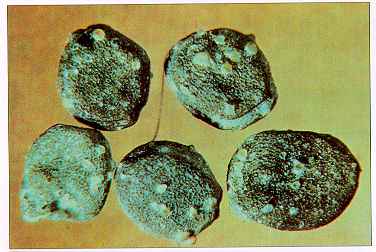
Figure 3. Infected seed (usually much less than 1% in seed lots).
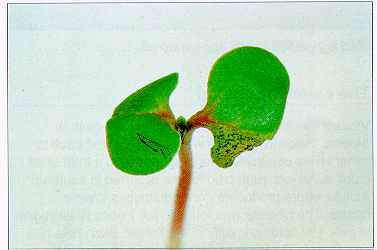
Figure 4. Infected seedlings - from infected seed.
When blackleg-infected seed is sown, the seedlings that emerge may be infected with lesions on the seedling leaves or stems (Figure 4). These infections can quickly form spores that remain infectious for only a few hours and are spread by rain to nearby healthy seedlings to start new infections. Moisture helps in the infection process.
In a single season, one infected seedling could spread the infection to many surrounding plants. Thus, a canola crop planted from diseased seed could develop scattered areas of infection all over the field. These blackleg infected plants result in infected stubble that continues to produce infectious spores (pycnidiospores) for three to five years.
Another kind of spore is present in infected stubble when the disease has been around for some time. This spore (ascospore) results from the mating of two distinct strains of the virulent blackleg fungus. Ascospores are very common in heavily infested regions of Saskatchewan.
Infected canola stubble discharges thousands of these spores into the air from May until October. The spores are wind-borne and can travel several kilometres in the air before landing. If they land on canola or volunteer canola plants in nearby fields, the spores can begin new infections and continue the disease cycle.
Infected stubble will produce ascospores for three to five years, with peak production normally occurring in the second year after infection. Ascospore production usually drops to low levels in subsequent years and stops after five years unless soil conditions are extremely dry.
How the disease organism survives
The fungus overwinters on infected canola stubble and seed (Figure 5). The fungus survives, usually on the stems and roots, which resist breakdown in the soil. Canola stubble, especially larger root pieces, can take two or three years to break down and up to five years during a series of dry seasons. Therefore, infected stubble can continue to produce spores of the blackleg fungus until it is buried and rots in the soil. Normally, the heaviest spore production comes from two-year-old infected stubble.
Blackleg can build-up during crop rotations on volunteer canola. Wild mustards may harbor blackleg infestations.
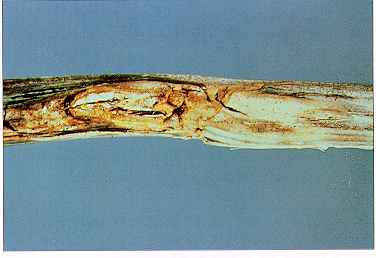
Figure 5. Blackleg overwinters on infected stubble (old cankers.)
How to prevent the introduction of virulent blackleg onto land
- Purchase seed that has been tested for blackleg. A laboratory certificate will be issued for all seed lots tested for virulent blackleg and shown to be negative for the disease.
- Treat all canola intended for planting with recommended fungicides (Figure 6).
- Even if seed does test blackleg-negative, there could be a few infected seeds in the total seed lot. A fungicide treatment will decrease the chances of blackleg surviving on the seed. Fungicides effectively reduce seed-borne blackleg, but they do not guarantee a 100 per cent control. Do not treat below recommended rates.
- A fungicide treatment minimizes the risk of blackleg contamination if blackleg-free seed was accidentally mixed with infected seed during cleaning operations.
- Recommended treatments also provide protection against other soil-borne diseases and flea beetles.
Recommended fungicide mixtures include the following:
| Benolin R | benomyl:thiram:lindane
IPCO |
| Cloak | carbathiin:thiram:lindane
Uniroyal Chemical Gustafson |
| Premiere Plus Flowable | thiabendazole:thiram:lindane
Chipman Ltd. |
| Rovral ST Flowable | iprodione:lindane
Rhone-Poulenc |
| Vitavax RS Flowable | carbathiin:thiram:lindane
Uniroyal Chemical/Gustafson |
| Vitavax RS Powder | carbathiin:thiram:lindane
Uniroyal Chemical/Gustafson |
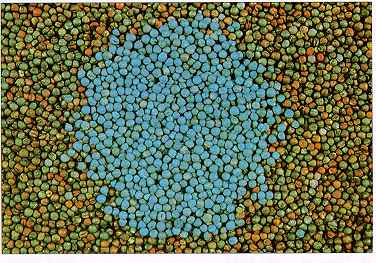
Figure 6. Seed treatment reduces or eliminates seed-borne blackleg.
- Practise a proper crop rotation.
- Do not grow canola on a field more frequently than once every four years. There is always a possibility that blackleg could be introduced to your land by wind-borne spores; longer rotations will increase the probability that low levels of disease infection will disappear when the infected stubble has rotted (Figure 7).
- Practise proper weed control, particularly of volunteer canola.
- Blackleg can live from one year to the next on volunteer canola and wild mustards. If you do not practice weed control and eliminate volunteer canola and mustards, a long crop rotation will be ineffective.
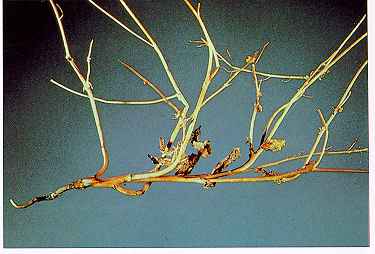
Figure 7. Virulent blackleg kills susceptible canola at flowering.
Control of blackleg on infested land
The following procedures must be adopted:
- Bury canola stubble in the top 12 cm (5 in) of soil in the field. Alternatively, where soil erosion is a problem, incorporate the canola stubble just before planting. This practice speeds stubble decomposition and reduces the disease infection potential in the field.
- In the following three seasons, use shallow tillage or direct seeding to avoid bringing infected canola residue to the surface. Additionally, plant non-host crops such as cereals, grasses, alfalfa, clover and pulses.
- If at all possible, avoid planting canola adjacent to infested land for three years.
- Keep infested land absolutely free of volunteer canola and any wild mustards. Note: You may have difficulty controlling volunteer canola in newly seeded alfalfa, clover and peas.
- Do not plant canola seed from infested land.
- In a few areas of the province where virulent blackleg is well-established, growers could consider crop spraying with Tilt (propiconazole). Tilt has been shown to reduce blackleg infestation levels.
- Plant blackleg tolerant varieties but recognize that "resistant" or tolerant canola can still have infected stems (Figure 8). There are currently no blackleg tolerant Polish varieties available. In areas where blackleg is prevalent, choose varieties with a 1 or 2 rating. In areas, where virulent blackleg is at low levels or has not been found, all registered varieties are suitable.
For further information regarding which canola varieties to choose, refer to the annual factsheet called Varieties of Cereals and Oilseed Crops for Alberat (Agdex 100/32). All varieties listed have ratings for tolerance to blackleg.
A tolerant variety with a rating of 1 is not immune to blackleg and can have 0-29% of stems infected. The disease is not as severe, and yield losses are not great compared to the more susceptible varieties.
 | Rating | Percentage of stems infected |
| Highly susceptible | 5 | 90-100% |
| Susceptible | 4 | 70-89% |
| Moderately susceptible | 3 | 50-69% |
| Moderately tolerant | 2 | 30-49% |
| Tolerant | 1 | 0-29% |
Accredited seed testing laboratories
All laboratories follow a uniform seed testing procedure.
BioVision Seed Research Ltd.
9954 - 67 Avenue, Edmonton T6E 0P5
Phone: (780) 436-8822
20/20 Seed Laboratories
Suite 201, 509 - 11 Avenue, Nisku T9E 7N5
Phone: (780) 955-3435
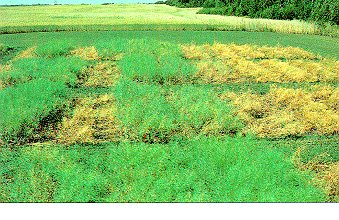
Figure 8. Tolerant and susceptible canola on blackleg infested land. dead central strip Westar (5) left to right. Green, Cyclone (2) Legend (3) (side by side). Large dead areas to the right are polish canolas (4). Numbers in brackets reflect disease ratings.
Prepared by:
L. Harrison
I. Evans
P. Thomas
P. Kharbanda
Source: Agdex 149/632-3. Revised June 1997. |
|